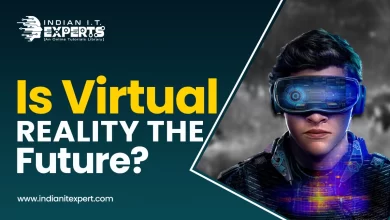Virtual Reality: The Ultimate Guide to Stepping into the Future
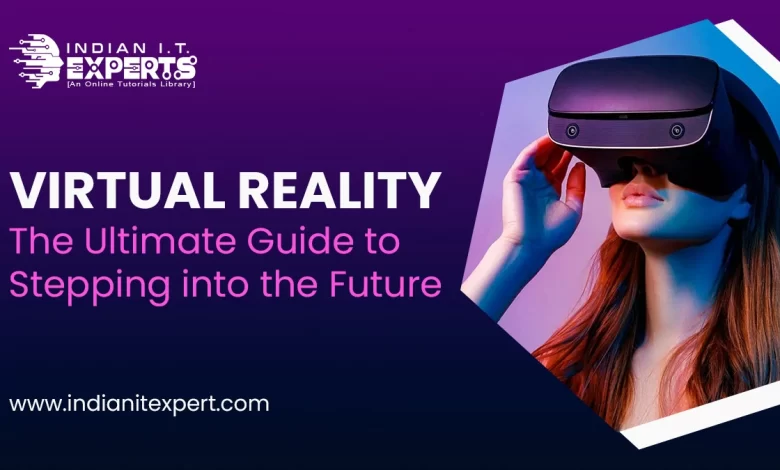
Strap yourself in, because we’re about to dive headfirst into the incredible world of Virtual Reality (VR)! VR isn’t just about fancy gadgets and video games (although those are pretty cool too). It’s a technology that is revolutionary and transforming the way we experience this world around us.
This blog post will provide you with all the details of VR. We’ll explore the fundamentals, and its mind-blowing applications, and even look into the fascinating future of VR.
Table of Contents
What is Virtual Reality?
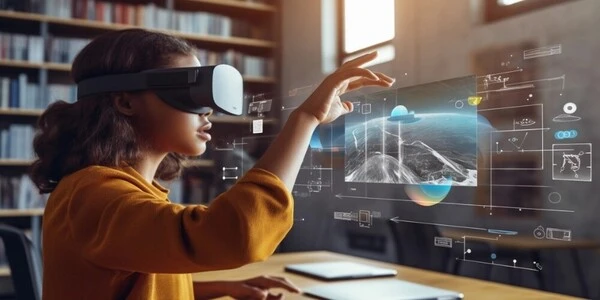
Imagine stepping into a computer-generated world. That’s the essence of VR! A headset can take you to a simulated environment that can be anything from an alien landscape to a detailed replica of the Great Wall of China. VR headsets create a fully immersive experience by combining visuals, sounds, and sometimes even tactile sensations.
The History of VR

The concept of VR has been around for decades, appearing in science fiction novels and early prototypes. However, technological limitations kept it from reaching its full potential. Advancements in computing power and display technology have finally paved the way for the VR revolution we’re experiencing today.
How Does Virtual Reality Operates?
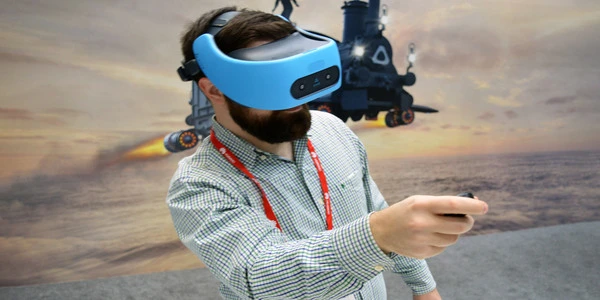
The magic behind VR lies in the headset. It contains a screen for each eye, creating a three-dimensional view. Motion sensors track your head movements, so as you turn your head, the virtual world adjusts accordingly. Some VR systems also include hand controllers, allowing you to interact with objects and navigate the virtual space.
Also read: What is Virtual Reality | Virtual Reality (VR)
Virtual Reality Beyond Gaming
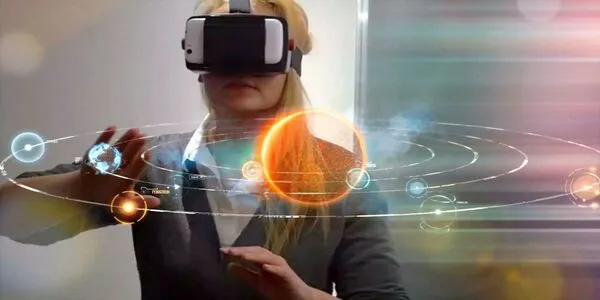
While VR gaming is undeniably popular, it’s just the tip of the iceberg. Here’s a glimpse of how VR is making waves across different industries:
- Education: Imagine exploring the pyramids of Egypt or dissecting a frog in a completely safe and interactive environment. VR is making learning more engaging and accessible than ever before.
- Training: VR simulations can put firefighters in realistic fire scenarios or surgeons in complex operating rooms, allowing them to practice their skills in a risk-free environment.
- Design and Architecture: Architects and designers can use VR to walk through 3D models of buildings before they’re even constructed.
- Therapy: VR is being used to treat phobias, anxiety, and even post-traumatic stress disorder (PTSD) by exposing patients to controlled virtual environments.
All about VR Gear
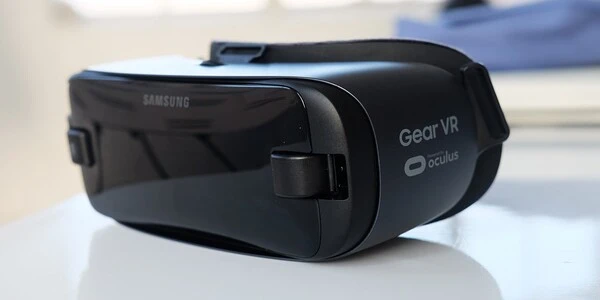
VR headsets come in three flavors:
- Plug-in headsets: These need a powerful computer or game console to work, but offer the best graphics.
- All-in-one headsets: These are self-contained and don’t need extra wires, but aren’t quite as powerful.
- Phone VR: Use your smartphone for VR experiences. They’re portable and affordable, but not as strong.
Controllers are like your VR hands. You use them to grab stuff and move around in the virtual world. They’re getting more realistic, so it feels like you’re really there.
To get the most out of VR, you might also need a VR-ready computer, good headphones, and sensors to track your movements in the room. All this stuff works together to make VR feel as real as possible.
Getting Started with Virtual Reality in 3 Easy Steps!
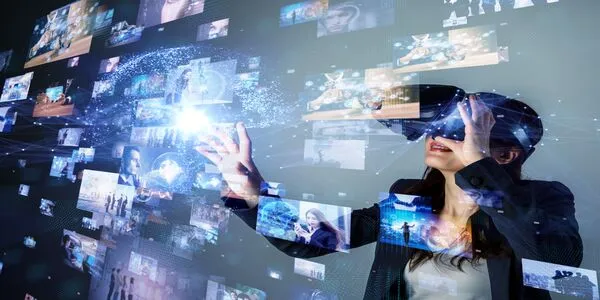
1. Prepare Your Play Area:
- Make sure you have enough space to move around freely without bumping into things. Clear out furniture and fragile objects.
- Find a well-lit spot. Some VR systems use cameras that work better with light.
- Consider using a rug or foam tiles for a more comfortable floor surface, especially for active games.
2. Set Up Your VR System:
- This will depend on your specific VR headset, but most involve:
- Downloading software
- Updating the system
- Setting up the hardware (usually following the manufacturer’s guide)
3. Calibrate for the Best Experience:
- This means adjusting things to fit you just right!
- IPD (eye distance) adjustment helps things look clear.
- Make sure the headset fits comfortably to avoid getting tired during use.
Also read: 6 Innovative Technologies Enhancing Learning Experiences
Virtual Reality: A World in Progress
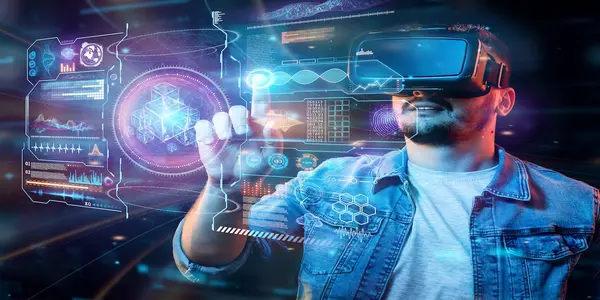
Virtual Reality (VR) is constantly evolving, and the path to flawless immersion is paved with hurdles. From the initial question of “How does VR work?” to today’s complex challenges, innovation has been driven by the need to overcome these limitations.
One persistent obstacle is cybersickness, that unpleasant feeling users experience after extended VR sessions. Leading companies like Varjo, HTC VIVE, and Microsoft are still battling this issue, along with discomfort caused by bulky headsets.
The rise of the metaverse and wider VR adoption pose new questions. Ethical considerations and cybersecurity threats demand solutions.
Cost remains another hurdle. While headsets are becoming more accessible, VR software and tool development is expensive and time-consuming. Building intuitive VR experiences requires significant investment, and the high computing power needed can have an environmental impact.
Addressing these challenges is crucial to create a VR world where everyone can participate and experience the full potential of this technology.
The Future of Virtual Reality

Virtual reality (VR) is on the brink of a major leap forward, evolving from niche entertainment into a technology that can impact many aspects of our lives. Here’s a glimpse into what the future of VR might hold:
1. Hyper-realism and Multisensory Experiences:
VR is moving beyond basic visuals. We can expect hyper-realistic environments with advanced graphics and sound design that blur the line between virtual and real. Additionally, research is underway in incorporating other senses like touch, smell, and even taste to create truly immersive experiences.
2. Education and Training:
Imagine exploring the pyramids of Egypt or dissecting a frog in a completely safe virtual environment. VR is poised to revolutionize education by offering interactive and engaging learning experiences. Similarly, VR simulations can provide effective training for professionals in various fields, from surgeons to pilots.
3. The Rise of Social VR:
VR is no longer just about isolated experiences. Social VR platforms are gaining traction, allowing people to connect, interact, and even create virtual spaces together. This trend is expected to grow, fostering new forms of communication and online communities.
4. Integration of Artificial Intelligence (AI):
The marriage of VR and AI has the potential to create groundbreaking experiences. AI can personalize VR environments, adapt to user behavior, and even generate realistic virtual characters for interaction.
5. VR in the Workplace:
Many companies are already exploring VR for applications beyond gaming. Virtual meetings, remote collaboration, and product design in VR are some of the exciting possibilities that can enhance productivity and communication in the workplace.
6. Advancements in Hardware:
VR headsets are becoming more comfortable, affordable, and powerful. We can expect lighter, sleeker designs with higher resolution displays and improved haptic feedback features to provide a more natural user experience.
The future of VR is brimming with potential. As the technology matures and becomes more accessible, it has the power to transform the way we learn, work, connect, and even perceive the world around us.
Conclusion
Virtual Reality is no longer just science fiction. It’s a rapidly evolving technology with the power to transform how we learn, play, connect, and experience the world around us. Whether you’re a seasoned techie or a curious newcomer, VR offers a unique gateway to boundless possibilities. So, are you ready to take the plunge? Put on your headset and step into a future brimming with virtual adventures!
Also, check:
FAQs
1. What kind of VR experiences are there?
VR encompasses a wide range of experiences, from gaming and entertainment to education, training, and even physical therapy. You can explore virtual worlds, travel to exotic locations, or even learn a new skill in a safe and immersive environment.
2. What equipment do you need for VR?
The core VR experience typically involves a headset with integrated displays and motion tracking. Some systems may also include hand controllers or other peripherals to enhance interaction within the virtual world.
3. Is VR safe for everyone?
While generally safe, VR can cause nausea or dizziness in some users, especially during initial use. It’s important to take breaks and ease into VR experiences. As with any screen time, moderation is key.
4. How much does VR cost?
VR technology ranges in price depending on the features and desired experience. There are budget-friendly options available, and VR experiences can also be found in arcades and entertainment centers.
5. What’s the future hold for VR?
The future of VR is incredibly bright! Advancements in technology promise even more immersive and realistic experiences. VR has the potential to revolutionize various industries and become an even more integrated part of our daily lives.


